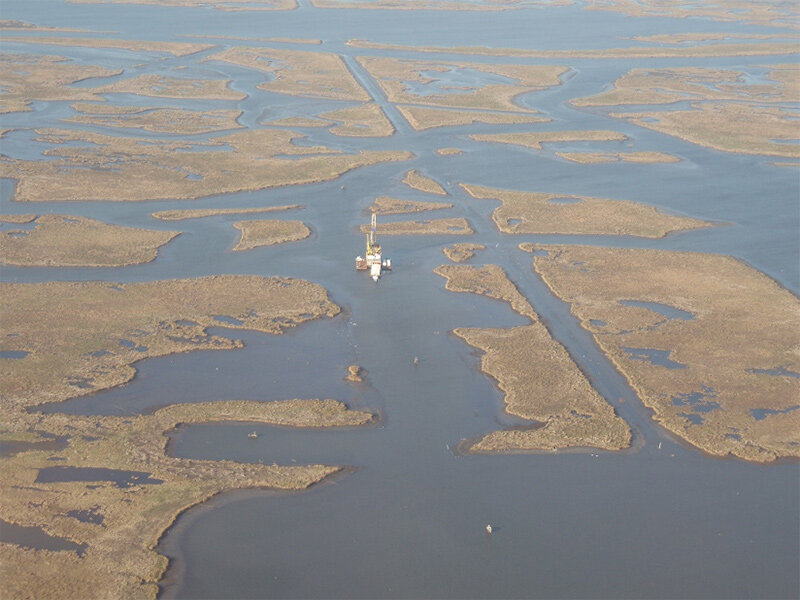SOURCE: Phys.org
DATE: May 22, 2020
SNIP: Given the present-day rate of global sea-level rise, remaining marshes in the Mississippi Delta are likely to drown, according to a new Tulane University study.
A key finding of the study, published in Science Advances, is that coastal marshes experience tipping points, where a small increase in the rate of sea-level rise leads to widespread submergence.
The loss of 2,000 square miles (5,000 km2) of wetlands in coastal Louisiana over the past century is well documented, but it has been more challenging to predict the fate of the remaining 6,000 square miles (15,000 km2) of marshland.
“Previous investigations have suggested that marshes can keep up with rates of sea-level rise as high as half an inch per year (10 mm/yr), but those studies were based on observations over very short time windows, typically a few decades or less,” said Torbjörn Törnqvist, lead author and Vokes Geology Professor in the Tulane Department of Earth and Environmental Sciences.
The researchers found that in the Mississippi Delta most marshes drown in a few centuries once the rate of sea-level rise exceeds about one-tenth of an inch per year (3 mm/yr). When the rate exceeds a quarter of an inch per year (7.5 mm/yr), drowning occurs in about half a century.
“The scary thing is that the present-day rate of global sea-level rise, due to climate change, has already exceeded the initial tipping point for marsh drowning,” Törnqvist said. “And as things stand right now, the rate of sea-level rise will continue to accelerate and put us on track for marshes to disappear even faster in the future.”

